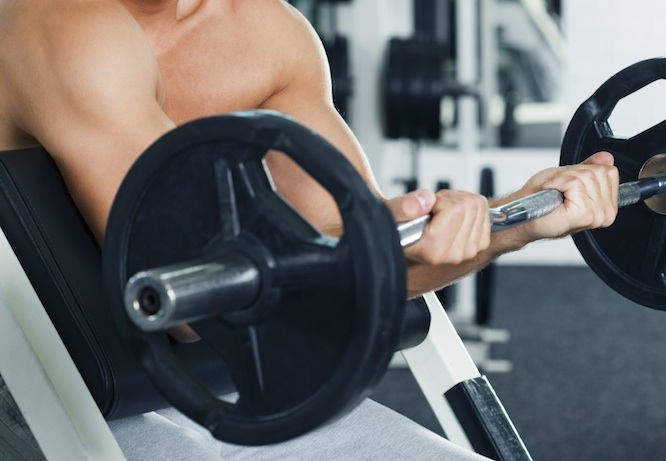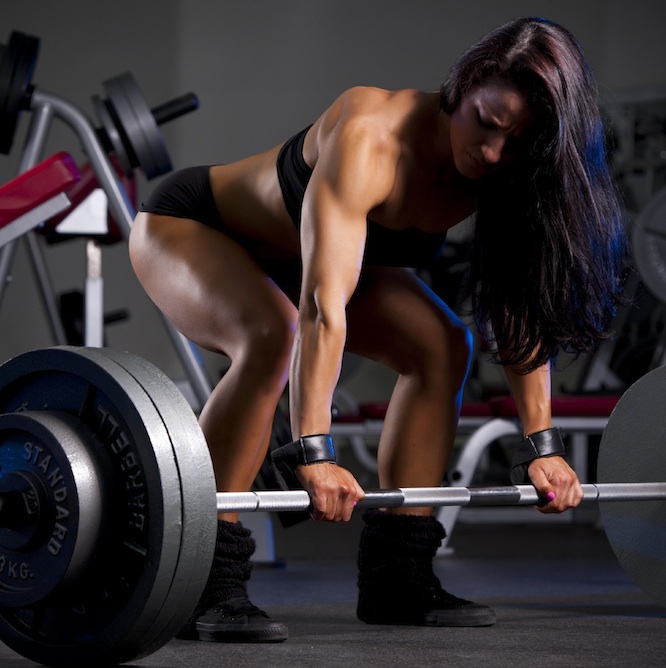28-Days-to-Lean Meal Plan
With the right plan and the right discipline, you can get seriously shredded in just 28 days.
Read article
Cheating has no clear-cut rules because it varies from one exercise to another and from one individual to another. In general, you want to be able to complete 6- 8 reps on your own with textbook technique before performing cheat reps. Here are some exercises that are either good, decent or bad candidates for cheating. Note: If you can’t do even a single rep with good form, any move would be considered dangerous.
Experienced bodybuilders can add a few cheat reps to the end of a set as long as the cheating motion is intentional and distributed as evenly as possible over several joints. Remember, heavy weights still increase your risk of injury if your form is poor.
1. Lying Leg Curl
Raising your hips off the bench makes the move easier because it recruits the lower back and glutes, and using a faster rep speed generates momentum.
2. Calf Raise
Use a little bounce at the bottom, a smaller range of motion or speed up the rep.
3. Dumbbell Lateral Raise
Extend your hips and knees slightly to create momentum. (When you do this same move seated, you’re essentially unable to generate the same degree of body english, making the seated version far more difficult to cheat on.)
4. Seated Cable Row (or Front Pulldown)
Strict form requires you to keep your torso locked in the upright position, but leaning back slightly as you pull recruits your low-back muscles to help generate momentum.
5. Alternating Dumbbell Curl
When switching arms, whether seated or standing, you can lean into the working-side arm to assist in the lift.
NEXT: 5 Exercises to Cheat on With Caution >>
Keep the form strict on heavy sets; you can use a bit looser form on lighter sets.
1. Bench Press
Arching your back and lifting your hips off the bench turns this exercise into a decline movement in which most bodybuilders are typically stronger. A little bounce off your chest may also help.
2. Standing Barbell Curl
Use body english generated from your hips and low back; let your delts help raise the weight by bringing your elbows forward.
3. Bent-Over Lateral Raise
This move requires you to maintain a body position in which you’re bent over about 30 degrees, but if you rise slightly as you lift the weights out to your sides, your lower back and legs can create momentum.

4. Bent-Over Barbell Row
Cheat in a manner similar to the bent-over lateral raise, typically with a larger angle in your hips (about 45 degrees).
5. Preacher Curl
Allow your elbows to flare out slightly to assist in the motion, while also leaning back a little to get the bar past the sticking point.
NEXT: 5 Worst Exercises for Cheating >>
Cheating on these moves is never recommended because they typically put the greatest pressure on the discs of your low back or rotator cuffs. Use other intensity-boosting techniques instead, and keep form strict.
1. Good Morning
This move puts the stress directly on your low back, so cheating exaggerates the stress even more, putting joints and soft tissue at higher risk.
2. Stiff-Legged Deadlift
This exercise involves the rounding of your back in the bottom position, which means you’re already highly vulnerable to injury.
3. Squat
Everyone has bounced a set here or there, but that’s acceptable with only very light weights. Working sets should be done as strictly as possible to protect your knees and low back.

4. Deadlift
Again, high force on the low back with very heavy weights means you must use perfect technique at all times.
5. Flat-Bench Dumbbell Press
You might think this is similar to the bench press, but you can’t bounce the dumbbells off your chest. A bouncing motion would be absorbed by your shoulder joints and rotator cuffs, which sustain damage far more easily.